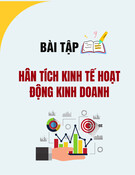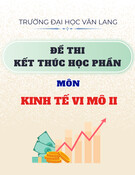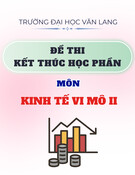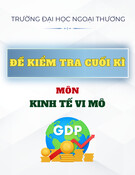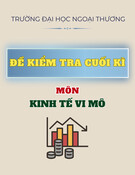
Chapter 29
The Monetary System
TRUE/FALSE
1. In an economy that relies on barter, trade requires a double-coincidence of wants.
ANS: T DIF: 1 REF: 29-0
NAT: Analytic LOC: The role of money TOP: Barter
MSC: Definitional
2. Joe wants to trade eggs for sausage. Lashonda wants to trade sausage for eggs. Joe and Lashonda have a
double-coincidence of wants.
ANS: T DIF: 1 REF: 29-0
NAT: Analytic LOC: The role of money TOP: Barter
MSC: Definitional
3. The use of money allows trade to be roundabout.
ANS: T DIF: 1 REF: 29-0
NAT: Analytic LOC: The role of money TOP: Money | Trade
MSC: Definitional
4. Roundabout trade is beneficial for an economy.
ANS: T DIF: 1 REF: 29-0
NAT: Analytic LOC: The role of money TOP: Money | Trade
MSC: Definitional
5. Money allows people to specialize in what they do best, thereby raising everyone’s standard of living.
ANS: T DIF: 2 REF: 29-0
NAT: Analytic LOC: The role of money TOP: Money
MSC: Interpretive
6. When money functions as a unit of account, then it cannot be commodity money.
ANS: F DIF: 2 REF: 29-1
NAT: Analytic LOC: The role of money TOP: Money
MSC: Interpretive
7. Demand deposits are balances in bank accounts that depositors can access by writing a check.
ANS: T DIF: 1 REF: 29-1
NAT: Analytic LOC: The role of money TOP: Demand deposits
MSC: Definitional
8. According to economists, a collection of valuable jewels is not money.
ANS: T DIF: 2 REF: 29-1
NAT: Analytic LOC: The Study of economics, and the definitions of economics
TOP: Money MSC: Interpretive
9. A debit card is more similar to a credit card than to a check.
ANS: F DIF: 2 REF: 29-1
NAT: Analytic LOC: The Study of economics, and the definitions of economics
TOP: Money MSC: Interpretive
10. Gary's wealth is $1 million. Economists would say that Gary has $1 million worth of money.
ANS: F DIF: 1 REF: 29-1
NAT: Analytic LOC: The role of money TOP: Money
MSC: Definitional
158

159 Chapter 29 /The Monetary System
11. Marc puts prices on surfboards and skateboards at his sporting goods store. He is using money as a unit of
account.
ANS: T DIF: 1 REF: 29-1
NAT: Analytic LOC: The role of money TOP: Money
MSC: Definitional
12. Sandra routinely uses currency to purchase her groceries. She is using money as a unit of account.
ANS: F DIF: 1 REF: 29-1
NAT: Analytic LOC: The role of money TOP: Money
MSC: Definitional
13. Bottles of very fine wine are less liquid than demand deposits.
ANS: T DIF: 1 REF: 29-1
NAT: Analytic LOC: The role of money TOP: Liquidity
MSC: Interpretive
14. U.S. dollars are an example of commodity money and hides used to make trades are an example of fiat money.
ANS: F DIF: 1 REF: 29-1
NAT: Analytic LOC: The role of money TOP: Commodity money
MSC: Definitional
15. When the Soviet Union began breaking up in the late 1980s, cigarettes began replacing the ruble as the
medium of exchange even though the ruble was legal tender. The cigarettes provide an example of fiat money.
ANS: F DIF: 1 REF: 29-1
NAT: Analytic LOC: The role of money TOP: Commodity money
MSC: Interpretive
16. In order for currency to be widely used as a medium of exchange, it is sufficient for the government to
designate it as legal tender.
ANS: F DIF: 1 REF: 29-1
NAT: Analytic LOC: The role of money TOP: Currency
MSC: Definitional
17. M1 includes savings deposits.
ANS: F DIF: 1 REF: 29-1
NAT: Analytic LOC: The role of money TOP: Money supply
MSC: Definitional
18. M2 is both larger and more liquid than M1.
ANS: F DIF: 1 REF: 29-1
NAT: Analytic LOC: The role of money TOP: Money supply | Liquidity
MSC: Interpretive
19. Credit cards are a medium of exchange.
ANS: F DIF: 2 REF: 29-1
NAT: Analytic LOC: The role of money TOP: Medium of exchange
MSC: Definitional
20. The series of bank failures in 1907 occurred despite the creation of the Federal Reserve many years earlier.
ANS: F DIF: 1 REF: 29-2
NAT: Analytic LOC: The role of money TOP: Federal Reserve System
MSC: Interpretive
21. Federal Reserve governors are given long terms to insulate them from politics.
ANS: T DIF: 2 REF: 29-2
NAT: Analytic LOC: Monetary and fiscal policy TOP: Federal Reserve System
MSC: Interpretive

Chapter 29 /The Monetary System 160
22. The Federal Reserve is a privately operated commercial bank.
ANS: F DIF: 1 REF: 29-2
NAT: Analytic LOC: Monetary and fiscal policy TOP: Federal Reserve System
MSC: Definitional
23. The Federal Reserve was created in 1913 after a series of bank failures in 1907.
ANS: T DIF: 1 REF: 29-2
NAT: Analytic LOC: Monetary and fiscal policy TOP: Federal Reserve System
MSC: Definitional
24. Members of the Board of Governors are appointed by the president of the U.S. and confirmed by the U.S.
Senate.
ANS: T DIF: 1 REF: 29-2
NAT: Analytic LOC: Monetary and fiscal policy TOP: Federal Reserve System
MSC: Definitional
25. Monetary policy is determined by a committee whose voting members include all the presidents of the
regional Federal Reserve Banks.
ANS: F DIF: 1 REF: 29-2
NAT: Analytic LOC: Monetary and fiscal policy
TOP: Federal Open Market Committee MSC: Definitional
26. The Federal Reserve primarily uses open-market operations to change the money supply.
ANS: T DIF: 1 REF: 29-3
NAT: Analytic LOC: Monetary and fiscal policy TOP: Open-market operations
MSC: Definitional
27. If the Fed buys bonds in the open market, the money supply decreases.
ANS: F DIF: 1 REF: 29-3
NAT: Analytic LOC: Monetary and fiscal policy TOP: Open-market operations
MSC: Applicative
28. Banks cannot influence the money supply if they hold all deposits in reserve.
ANS: T DIF: 2 REF: 29-3
NAT: Analytic LOC: Monetary and fiscal policy TOP: Banks | Money supply
MSC: Interpretive
29. Banks still could contribute to changes in the money supply, even if they were required to hold all deposits in
reserve.
ANS: F DIF: 1 REF: 29-3
NAT: Analytic LOC: Monetary and fiscal policy TOP: Fractional-reserve banking
MSC: Applicative
30. If banks hold any amount of their deposits in reserve, then they do not have the ability to influence the money
supply.
ANS: F DIF: 2 REF: 29-3
NAT: Analytic LOC: The role of money TOP: Reserves | Money supply
MSC: Interpretive
31. When the Federal Reserve decreases the discount rate, the quantity of reserves increases and the money supply
increases.
ANS: T DIF: 2 REF: 29-3
NAT: Analytic LOC: Monetary and fiscal policy
TOP: Discount rate | Reserves | Money supply MSC: Interpretive
32. The money multiplier equals 1/(1 - R), where R represents the reserve ratio.
ANS: F DIF: 1 REF: 29-3
NAT: Analytic LOC: Monetary and fiscal policy TOP: Money multiplier
MSC: Definitional

161 Chapter 29 /The Monetary System
33. Assume that when $100 of new reserves enter the banking system, the money supply ultimately increases by
$625. Assume also that no banks hold excess reserves and that the entire money supply consists of bank
deposits. If, at a point in time, reserves for all banks amount to $500, then at that same point in time, loans for
all banks amount to $2,625.
ANS: T DIF: 3 REF: 29-3
NAT: Analytic LOC: Monetary and fiscal policy TOP: Money multiplier
MSC: Analytical
34. Assume that when $100 of new reserves enter the banking system, the money supply ultimately increases by
$800. Assume also that no banks hold excess reserves and that the entire money supply consists of bank
deposits. If, at a point in time, reserves for all banks amount to $750, then at that same point in time, loans for
all banks amount to $6,000.
ANS: F DIF: 3 REF: 29-3
NAT: Analytic LOC: Monetary and fiscal policy TOP: Money multiplier
MSC: Analytical
35. As banks create money, they create wealth.
ANS: F DIF: 1 REF: 29-3
NAT: Analytic LOC: The role of money TOP: Banks | Money
MSC: Definitional
36. The money supply of Hooba is $10,000 in a 100-percent-reserve banking system. If Hooba decreases the
reserve requirement to 10 percent, the money supply could increase by no more than $9,000.
ANS: F DIF: 2 REF: 29-3
NAT: Analytic LOC: Monetary and fiscal policy TOP: Money multiplier
MSC: Applicative
37. If the Fed decreases reserve requirements, the money supply will increase.
ANS: T DIF: 1 REF: 29-3
NAT: Analytic LOC: Monetary and fiscal policy TOP: Reserve requirements
MSC: Applicative
38. An increase in reserve requirements increases reserves and decreases the money supply.
ANS: F DIF: 2 REF: 29-3
NAT: Analytic LOC: Monetary and fiscal policy TOP: Reserve requirements
MSC: Applicative
39. Just after the terrorist attack on September 11, 2001, the Fed stood ready to lend financial institutions funds.
When the Fed did this, it was acting in its role of lender of last resort.
ANS: T DIF: 1 REF: 29-3
NAT: Analytic LOC: Monetary and fiscal policy TOP: Lender of last resort
MSC: Definitional
40. Because of the multiple tools at its disposal, the Fed can control the money supply very precisely.
ANS: F DIF: 2 REF: 29-3
NAT: Analytic LOC: Monetary and fiscal policy TOP: Federal Reserve System
MSC: Interpretive
41. In the months of November and December, people in the United States hold a larger part of their money in the
form of currency because they intend to shop and travel for the holidays. As a result, other things the same the
money supply increases.
ANS: F DIF: 2 REF: 29-3
NAT: Analytic LOC: Monetary and fiscal policy TOP: Currency | Money multiplier
MSC: Applicative

Chapter 29 /The Monetary System 162
42. Other things the same, if banks decide to hold a smaller part of their deposits as excess reserves, the money
supply will fall.
ANS: F DIF: 2 REF: 29-3
NAT: Analytic LOC: Monetary and fiscal policy TOP: Reserves
MSC: Applicative
43. Bank runs and the accompanying increase in the money multiplier caused the U.S. money supply to rise by 28
percent from 1929 to 1933.
ANS: F DIF: 2 REF: 29-3
NAT: Analytic LOC: Monetary and fiscal policy TOP: Banks | Money multiplier
MSC: Definitional
SHORT ANSWER
1. Economists argue that the move from barter to money increased trade and production. How is this possible?
ANS:
The use of money allows people to trade more easily. When it is easier to trade, specialization increases. Increased
specialization increases production and the standard of living.
DIF: 2 REF: 29-1 NAT: Analytic
LOC: The role of money TOP: Barter | Money
MSC: Interpretive
2. What is the difference between money and wealth?
ANS:
Money is defined as the set of assets in the economy that people regularly use to buy goods and services from other
people. Wealth includes all assets, both monetary and nonmonetary.
DIF: 2 REF: 29-1 NAT: Analytic
LOC: The role of money TOP: Money MSC: Definitional
3. Which of the three functions of money are commonly met by each of the following assets in the U.S.
economy?
a. paper dollar
b. precious metals
c. collectibles such as baseball cards, stamps, and antiques
ANS:
a. medium of exchange, store of value, unit of account
b. store of value
c. store of value
DIF: 1 REF: 29-1 NAT: Analytic
LOC: The role of money TOP: Money MSC: Interpretive
4. Are credit cards and debit cards money? What's the difference between credit and debit cards?
ANS:
Neither credit cards nor debit cards are money, but credit cards are very different from debit cards. Credit cards are
not a medium of exchange, but are a means of deferring payment. Debit cards allow the user immediate access to
deposits in a bank account. These deposits are part of the money supply.
DIF: 2 REF: 29-1 NAT: Analytic
LOC: The role of money TOP: Money MSC: Interpretive

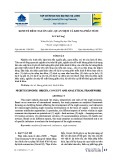
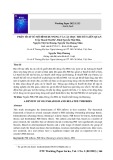
![Tương lai của năng suất: Tổng luận [Nghiên cứu mới nhất]](https://cdn.tailieu.vn/images/document/thumbnail/2021/20210201/caygaocaolon10/135x160/3821612151169.jpg)
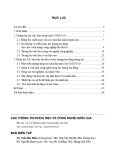
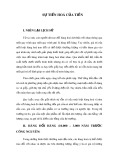
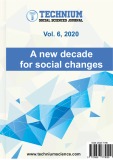
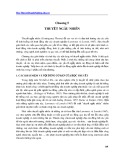
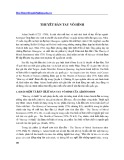
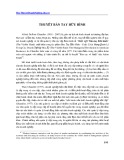
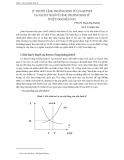
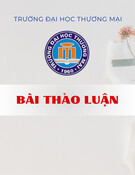

![Bài tập Kinh tế vi mô kèm đáp án [chuẩn nhất]](https://cdn.tailieu.vn/images/document/thumbnail/2025/20250923/thaovu2k5/135x160/19561758679224.jpg)
